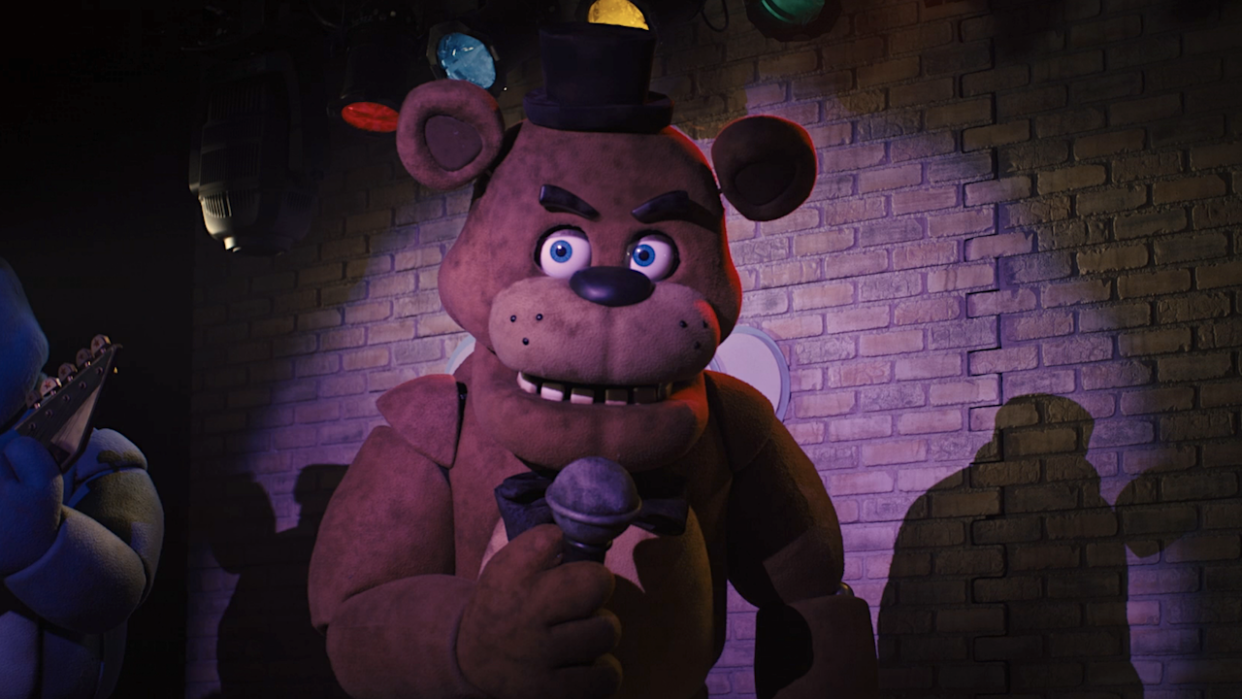Why The Five Nights At Freddy's Movie Doesn't Go As Hard On Jumpscares As The Game

There are plenty of complexity-filled narratives out there that would make for extremely baffling video game adaptations, from Disco Elysium to Immortality to Elden Ring, but the world of Five Nights at Freddy’s seemed perfectly ripe for cinematic expansions. Beyond the camera-ready animatronic characters, FNAF’s evolving storylines and characters are now massive enough to potentially fuel an open-ended franchise on the big screen. It’s a far cry from the comparatively limited early days of developer Scott Cawthon’s creations, which relied heavily on nerve-grinding jumpscares as fan-building hooks. And according to director Emma Tammi, a big draw of expanding the story theatrically was focusing on characters as much as sudden jolts.
When I talked to the Five Nights at Freddy’s helmer about bringing this highly anticipated horror flick to a fandom of millions, I asked for her take on bringing a recognizable balance to adapting the early games’ somewhat necessarily limited character scope, without the need to rely on a revolving door of frights. Here’s how she put it:
When I first came on board to the project, the existing version of the script that I read, that was one of the things that really stuck out to me when I first read it. It was very clear that Scott wanted to bring real and complex human stories into the fold of this movie. And also to hang the jumpscares, and hang the world of the pizzeria, onto these characters’ stories, with big backstories and arcs.
Maybe if one or more other screenwriters were initially in charge of tackling Five Nights at Freddy’s instead of Cawthon and Seth Cuddeback, there might have been a larger desire to set up an endless array of corner-turning jumpscares, or lights-out-and-on-again jumpscares, or eek-there’s-Balloon-Boy jumpscares. Okay, so that last one was pretty relevant to several moments in the final screenplay, but the Balloon Boy moments (including the mid-credits scene) were easily the most tongue-in-cheek frights.
RELATED: How To Watch Five Nights at Freddy's Online And Stream From Anywhere Now
RELATED: Five Nights At Freddy's: 12 Details And Easter Eggs I Noticed While Rewatching On Peacock
Anyway, the point is that someone who hasn’t lived in the FNAF-verse mindset for as long as its creator possibly would have gone the more straightforward route in bringing the pixelated and novelized universe to live-action, potentially making Five Nights more of a “trapped in a single (sister) location” movie in the vein of something like The Mist or Cube. But Cawthon wanted to kick the film side off with a more well-rounded story that introduced and remixed a bunch of source material elements from years’ worth of projects, since movies are way too expensive and time-consuming to handle in the same parsed-out manner.
Understandably, honing in on characters and plot was as much a draw for Emma Tammi, who co-wrote the finalized script, as anything. She continued, saying:
So that was something that I was really drawn to, as a storyteller, that there was so much there in terms of the character development. And I was trying to bring that to life as much as I possibly could.
Regardless of one's personal mileage regarding the storyline, Five Nights at Freddy's is an unmistakable hit for Blumhouse and Peacock, and it's hard to know whether it would have done better, worse, or the same if the film hinged entirely on successive jumpscares. But I'm betting the creative team will take the fans' responses to heart when putting together the yet-to-be-confirmed second FNAF movie. Maybe a jumpscare montage right up top just to get it out of the way.
Rewatch Five Nights at Freddy's to your heart's content with a Peacock subscription, and check out all the other upcoming horror movies on the way!

